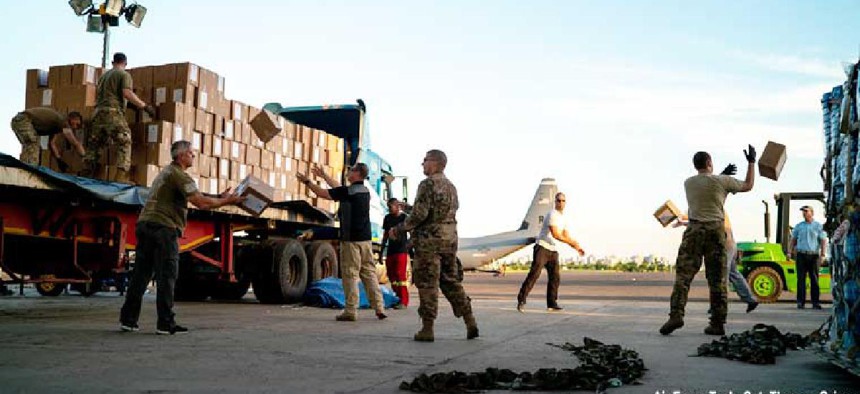USAID seeks remote sensing, analytics platform to track location, condition of aid


Connecting state and local government leaders
The Agency for International Development is looking cost-effective remote sensing solutions to keep tabs on humanitarian aid as it travels from its source to its destination.
The U.S. Agency for International Development is looking for a way to keep tabs on humanitarian aid as it travels from source to destination, often encountering including lengthy transit times, customs delays, poor transport infrastructure and harsh weather.
In a Jan. 7 broad agency announcement, USAID’s Bureau for Humanitarian Assistance said it is looking to track the location and monitor the quality of commodities throughout the aid supply chain and wants to collaborate in research and development of cost-effective remote sensing solutions.
Currently, USAID lacks real-time data on the location and condition of thousands of metric tons of aid in any given month, relying on periodic reports and siloed data from freight forwarders and warehousing agents. Additionally, problems with the safety and quality of food items are not discovered until the aid is nearly at its destination, making it difficult to take corrective action, the BAA said.
USAID seeks innovative ways to remotely collect and share data on the location, condition and quality of assistance moving through the supply chain, specifically monitoring location, temperature, humidity, shock and tilt. It also wants to use data analytics to reduce waste, damage, risk and inefficiencies and improve operational oversight.
Several constraints exist, however, including local connectivity and communications access that would limit data management, visualization and analysis, so proposed solutions must also address the USAID’s contextual challenges and its partners’ unique operating environments, the BAA said.
According to the BAA, the sensor-based solution and platform should feature real-time or near real-time tracking and monitoring of commodities, the ability to analyze and report on commodity status across the supply chain and integration with internal and external systems through application program interface or electronic data exchanges. Additionally the solution should leverage commercial off-the-shelf, open-source and industry-standard technology.
Responses are due Feb. 1. Read the full announcement here.




